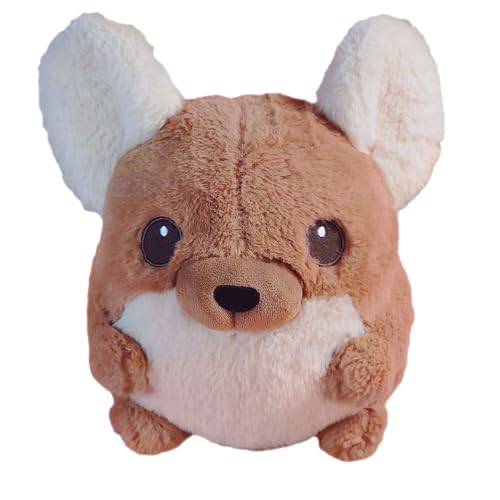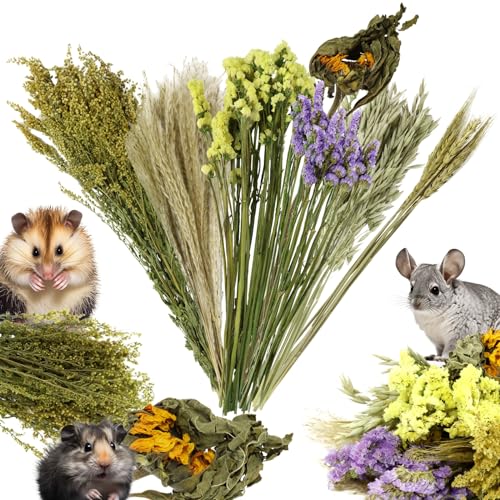Well, I'm going to be controversial & say that's probably THE best vet care sheet I have ever seen - I agree with the vast majority of it, including the bit about pellets & fresh veggies.
*waits for forum mebers to spontaneously combust*
Having said that, let me try to explain why.....
A really important paragrah was missed from the OP:
Inappropriate foods: You should NEVER offer your chinchilla other treats such as seeds or sugary stnacks. This are not appropriate and can upset their stomach
Remember that any diet changes MUST be made slowly. If it is too fast, this can upset the gut and cause bacterial imbalances and that can kill your chinchilla. It may take up to 1 week to introduce a new vegetable, hay or brand of pellets.
That's bang on the money - it's what we post time & time again on this forum - that chins have a delicate gut & any changes must be made slowly.
Are chins
really designed not to have fresh foods? I'm not so sure. If you look through the nature of foods available to chins in the wild then they do eat seasonal fresh greens - the differences between the fresh 'greens' they would get in the wild & the fresh greens we have are water content & nutritional value - chins in the wild have a very sparse diet due to their environment.
They live off a seasonal variety of seeds, grasses, cactus fruits ..... some will be dry but some will be fresh.
*I can't find the research paper I've read about this but I'll keep looking & add it later*
This paragraph is interesting - (from:
http://www.auburn.edu/academic/classes/biol/5090/boyd/Captivity_effects.pdf)
Many diets fed to captive animals have been formulated to provide the nutritional requirements for growth, but they often lack texture and interest (Lindburg, 1998).
This is interesting. Let's explore......
When the first captive chins were brought across to America by Matthias Chapman there were no chinchilla pellets. The diet for chins has been made up ever since - have the pellets we have today changed much? No.
Think about it, one of the keys for chinchilla ranchers was profit. That's a given; whether you like fur farming or not, it was the number of chins which could be successfully bred to make the greatest number of useable pelts.
Feeding fresh foods was just not economically viable or pratcical (some ranchers don't feed hay now - that always sparks debate) & no rancher would want to lose a whole load of chins because they reacted to fresh foods, had raging diarrhoea & died.
Pellets are easy to feed, relatvely cheap, convenient, &, when the nutirional values are 'right', the chins grow fast, strong & can support multiple kits with milk.
Get pellets wrong & fur quality is affected, dental issues crop up, gut problems are rife, kit production is reduced, survival rates drop ........
Also, one of the first bits of advice anyone gives to a forum member who has a chin with soft droppings/diarrhoea is ..... cut out the pellets & free freed good quality hay for a couple of days ..... have a ponder on that.
The rationale behind that is the relatively high carb, high protein, low fibre pellets are replaced with high fibre roughage to bulk out the gut contents - giving the gut something bulky to move along & slowing absorption/fluid loss etc.
Am I saying there's anything wrong with feeding pellets? Nope, I'm not.
I'm just throwing this stuff out there for thought & discussion.
Also, in the wild food is often not as highly nutritious and contains abrasive particles such as grit or phytoliths.
The lack of abrasion in captive diets, resulting in reduced or abnormal toothwear, has led to problems of malocclusion in herbivorous animals, such as rodents, lagomorphs and elephants, which have teeth designed to be worn down by chewing throughout their life.
Studies of both equids (Groves, 1966) and chinchillas (Crossley & Miguélez, 2001) have shown that an insufficiently abrasive diet can have serious consequences for an animal’s oral health. In the case of the equids, the increasing height of the maxillary and mandibular molars led to the incisors being held apart, so that the animals were unable to graze effectively (Groves, 1966). Like the equids, the tooth crowns of captive chinchillas were found to be significantly higher than those of wild chinchillas, which led to difficulties in chewing and, in some cases, the tooth roots protruded into the nasal cavity (Crossley & Miguélez, 2001).
The whole paragraph is significant. David Crossley is well known for his work on dental issues in chinchillas - the lack of tooth wear is one of the reasons why some of us do restrict pellets but free freed hay - because pellets were designed for growth, not dental wear.
I free feed hay but restrict pellets to 1-2 tablespoons per day because I want chins chewing high fibrous forage so that they wear the coronal surfaces of the teeth.
Would I feed fresh veggies? I did - when I first had Monty & before I found the joys of internet forums, Monty enjoyed a tiny bit of fresh veg each day. I introduced it slowly, found out what he liked, & watched his droppings for signs of problems. Did he ever react? No. Did he like it? Yes!
Now I have far too many chins to feed fresh stuff & keep an eye on their guts - instead I feed a variety of dried forages daily & I give dried herbs as treats a couple of times per week. Hay is free fed, pellets restricted.
Very occasionally I will give some of my more spoiled chins a teeny piece of fresh apple skin (thumbnail size piece or smaller) or a little fresh/pear apple twig.
I know of chins who have been fed fresh foods (alongside a small amount of pellets plus good quality hays/forage) their entire lives & have had no issues at all - a pair of chins my friend had returned to her at the ripe old age of 10 had been fed this way for years & were very healthy & happy.
The addage applies -
just because you can, doesn't mean you should (& I am NOT advocating people feed their chins fresh stuff) BUT I do think that some of the apparent logic behind the 'no fresh food' rule is spurious & parroted without thinking it through.
Discuss .........

opcorn:






















































